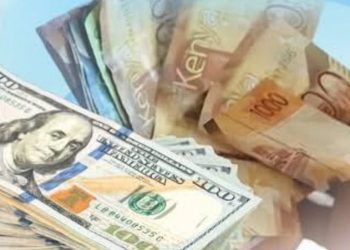The U.S. Federal Reserve has slashed its benchmark interest rate by half a percentage point. While this decision was made in Washington D.C., its effects will be felt far and wide – including in Kenya, over 7,000 miles away across the Atlantic and Indian Oceans. But what exactly does this mean for the average Kenyan, and for the country’s economy as a whole?
The Basics: What Just Happened?
Before we dive into the implications for Kenya, let’s break down what the Fed actually did. The Federal Reserve, America’s central bank, lowered its target for the federal funds rate to a range of 4.75-5 percent. This is the rate at which banks lend money to each other overnight, and it influences interest rates throughout the U.S. economy.
The Fed made this move because inflation in the U.S. is cooling off, and they want to keep the economy humming along without overheating. It’s like taking your foot off the brake pedal as you’re coming to a stop – you don’t want to slow down too quickly.
The Shilling’s Dance with the Dollar
One of the most immediate effects Kenyans might notice is a change in the exchange rate between the Kenyan Shilling and the U.S. Dollar. When the Fed cuts rates, it typically leads to a weaker dollar. This means that, all else being equal, the Shilling could strengthen against the dollar.
On the surface, this sounds great – your Shillings could buy more dollars! But it’s a double-edged sword. A stronger Shilling makes Kenyan exports more expensive for foreign buyers, which could hurt industries like agriculture that rely heavily on exports.
Breathing Room for Borrowers
Kenya, like many developing countries, has taken on significant debt denominated in U.S. dollars. When U.S. interest rates fall, it can reduce the cost of servicing this debt. This could free up some cash in the government’s budget – money that could potentially be used for infrastructure projects, education, or healthcare.
But don’t pop the champagne just yet. While lower rates might offer some relief, Kenya’s debt challenges are complex and won’t be solved by U.S. monetary policy alone.
A Mixed Bag for Investors
For Kenyans with investments in the U.S. or dollar-denominated assets, the Fed’s move could have mixed effects. Lower interest rates often boost stock markets, which could be good news if you’ve got money in U.S. equities. However, if you’re holding U.S. bonds or savings accounts, you might see lower returns.
On the flip side, if U.S. investments become less attractive due to lower yields, we might see more foreign investment flowing into Kenya in search of higher returns. This could provide a boost to the Nairobi Securities Exchange and potentially help fund local businesses and startups.
The Tourism Tango
Kenya’s tourism industry, a crucial part of the economy, could also feel the effects of the Fed’s decision. A weaker dollar could make it cheaper for Americans to visit Kenya, potentially boosting tourism numbers. However, if the Shilling strengthens too much, it could make Kenya a more expensive destination for visitors from other countries.
The Bigger Picture: Global Growth
Perhaps the most significant impact of the Fed’s rate cut on Kenya isn’t direct at all, but rather the effect it has on global economic growth. The U.S. is the world’s largest economy, and when it sneezes, the rest of the world often catches a cold (or in this case, when it takes a deep breath, the rest of the world might feel a bit more energized).
If lower interest rates stimulate the U.S. economy, it could lead to increased demand for goods and services from around the world – including from Kenya. This could benefit Kenyan exporters and potentially lead to more foreign investment in the country.
What to Watch For
As Kenyans navigate this shifting economic landscape, there are a few key things to keep an eye on:
- Exchange rates: Watch how the Shilling performs against the dollar and other major currencies.
- Inflation: If too much foreign money flows into Kenya, it could lead to inflation. The Central Bank of Kenya will be monitoring this closely.
- Interest rates: Will the Central Bank of Kenya follow the Fed’s lead and cut rates, or will it chart its own course?
- Foreign investment: Keep an eye out for news of increased foreign investment in Kenyan businesses and infrastructure projects.
- Export performance: Watch for any changes in the performance of key export sectors like tea, coffee, and cut flowers.
The Bottom Line
The Fed’s decision to cut rates is like tossing a stone into a pond – the ripples will reach far and wide, including to the shores of Kenya. While there are potential benefits, from easier debt servicing to increased foreign investment, there are also risks and challenges to navigate.
For the average Kenyan, the effects might not be immediately noticeable in day-to-day life. But over time, these global economic shifts can impact everything from the cost of imported goods to job opportunities in export-oriented industries.
As always in economics, there’s no free lunch. The key for Kenya will be to capitalize on the potential upsides of this shift in U.S. monetary policy while mitigating the risks. It’s a delicate balance, but one that could help propel Kenya’s economy forward if managed skillfully.















